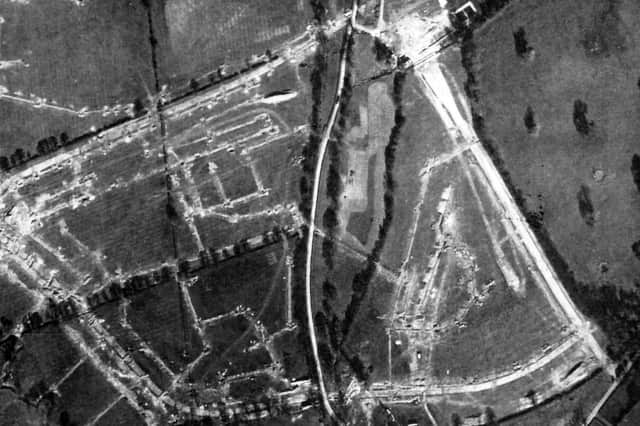NOSTALGIA: Nightmare mudbath on new Leigh Park estate glorious mud of estate


lan Smith sent me an Evening News cutting from the period describing how the mud followed residents into homes, shops, buses and schools. Most came from lorries dropping off building supplies for all those new houses.
The nuisance was made worse by the passage of buses and mobile shops. In dry weather the clods of earth could be tolerated but when it was wet it became so bad that rubber boots or over-shoes were the only thing to wear to stop mud splattering over stockings and trousers.
It was even more hazardous for people waiting at bus stops.
Advertisement
Hide AdAdvertisement
Hide AdWhen the bus arrived everyone had to take several strides backwards to save being covered from head to foot in muddy spray.
A newsagent said that he supplied his boys with cycles and every time they returned to the shop after making their deliveries the bikes had to be thoroughly cleaned because the wheels became clogged with mud and would jam.
A Mr White, the headmaster at Stockheath Primary School, said the mud was 'indescribable and worse than other years'.
The mud trodden into the classrooms made it the devil's own job for the cleaners to remove once it had dried.
Advertisement
Hide AdAdvertisement
Hide AdMr White added: 'I am surrounded by mud on three sides and it was virtually impossible for children to avoid the mud-covered concrete roads and to reach the school without their shoes being covered in mud.'Â
He went on to describe how bulldozers and lorries made the roads treacherous at night as well.
A Mr Cusworth, of Botley Drive post office and newsagents, said mud was regularly carried into his shop and the place became filthy after a wet day.
New residents, who had moved to their new homes on the estate after living in small rooms in Portsmouth, complained that although the houses were lovely they had been allowed to move in before pavements had been laid properly.
Advertisement
Hide AdAdvertisement
Hide AdMany said their homes were surrounded by a mud-like moat. All they had was a cinder path from the front door to the road but they soon sank into the mud when it became waterlogged.
A Portsmouth Corporation spokesman said the pavements had to be built last otherwise they would be smashed by the heavy construction vehicles.
He said there was bound to be a gap between completion of houses and the construction of footpaths because that particular area had to be completed before work was put out to tender.
He explained that the public did not appreciate the time it took to negotiate through committee stages, loan sanctions and for contracts to be settled.
Advertisement
Hide AdAdvertisement
Hide AdIn this aerial photo of 1949, Riders Lane is the white line down the centre and to the right of it can be seen the foundations of St Francis Church. On the far right is what is Dunsbury Way today.
n Last Saturday I mentioned the desecration of naval war graves around the world, particularly many in the Far East.
I don't think I have ever received so many e-mails from readers on any one subject.
They all told me of their abhorrence at the practice and several mentioned it was not always foreign shipbreakers who did the damage. Apparently the British government also thought it was all right to break into a ship if the reason was, in its view, worthwhile.
Advertisement
Hide AdAdvertisement
Hide AdI have put together a mixture of the replies from John Boxall, Alan Taylor and Frank Smithson which came in about the Town-class light cruiser HMS Edinburgh.Â
'˜Your column reminded me that the government has recently contacted certain Far East governments to complain about salvage teams plundering wartime wrecks.This would seem to me to be a bit like the pot calling the kettle black!Â
'˜On April 30, 1942, HMS Edinburgh was torpedoed by U-456 and the German destroyers Z 24 and Z 25 in the Barents Sea [off the northern coasts of Norway and Russia], and scuttled two days later. Two officers and 56 ratings were lost and the ship was later designated a war grave.Â
'˜At the time of her sinking she was carrying gold bullion, to the then value of £1.5m, from Russia as part-payment for supplies from the western allies.
Advertisement
Hide AdAdvertisement
Hide Ad'˜In the 1970s the government, frightened that the Russians might dive and recover the gold, authorised the wreck to be dived on and gave permission for divers to cut into the ship and recover the gold then thought to be valued at £30m.'
In 1981 the gold was found and 431 ingots, then valued at more than £40m, was returned to the UK.
Â